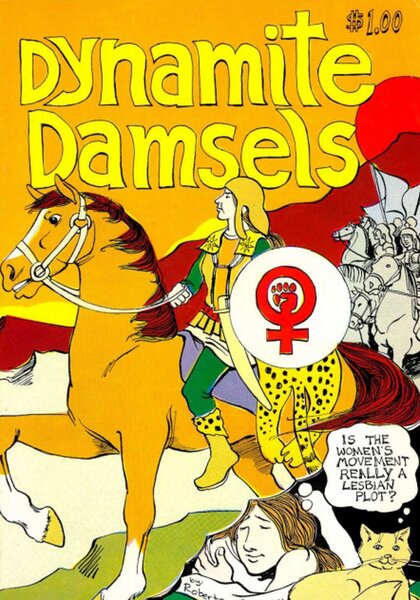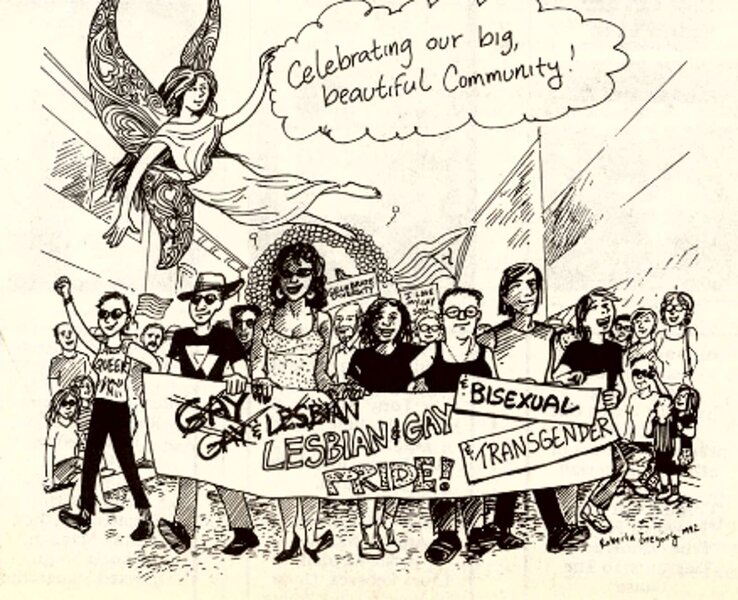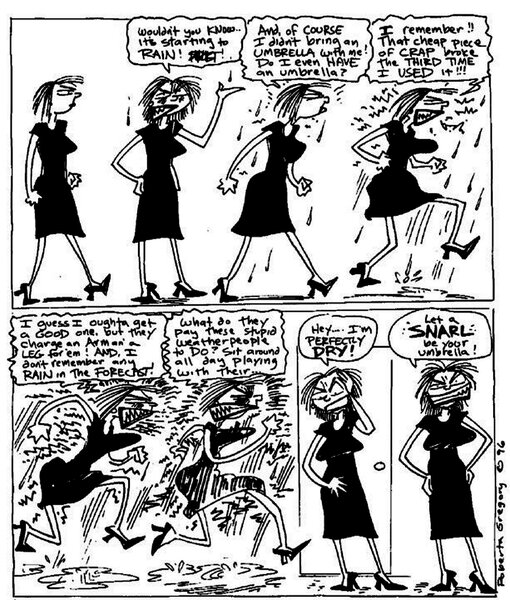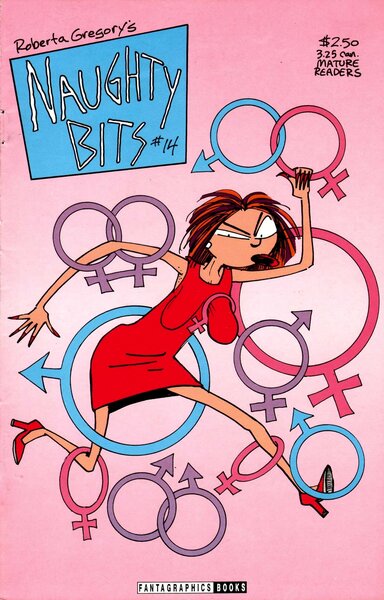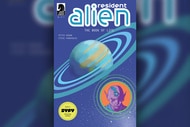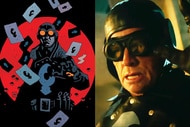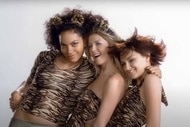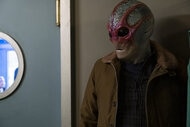Create a free profile to get unlimited access to exclusive videos, sweepstakes, and more!
Pride-ographies: Roberta Gregory
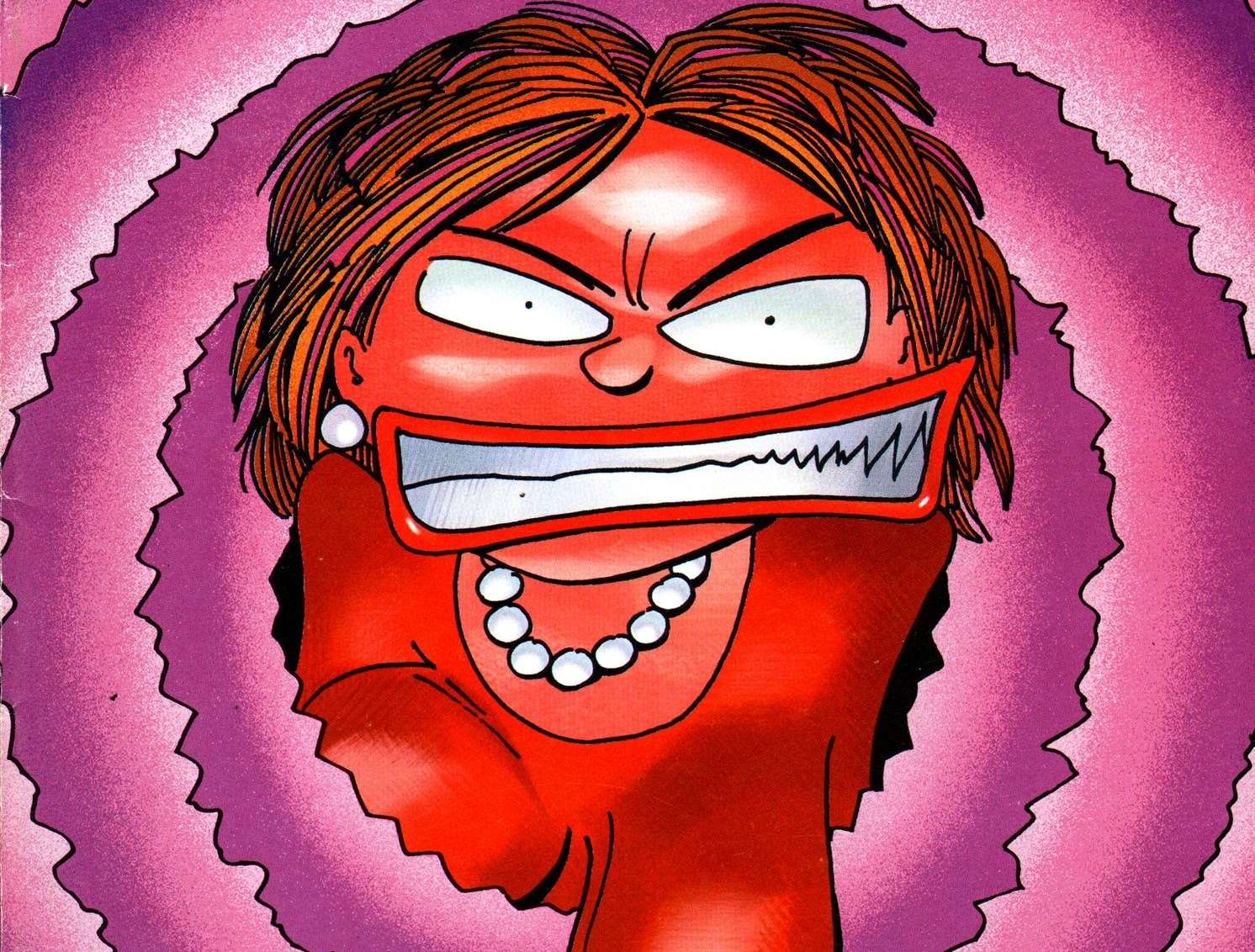
The Underground Comix era began in the late '60s in response to the heavy censorship of the medium due to the presence of the Comics Code Authority. People wanted to make books that looked like their lives, and so, as we had the indie explosion in cinema, so did comics see their own groundbreaking era of creativity. Some of these comix aged well, most of them haven't, but all of them existed in the spirit of disrupting the status quo of the medium.
When discussing an era of experimental and groundbreaking autobiographical works in the comix scene, queer comix by queer creators so often fall by the wayside. While many artists of this time period went on to have illustrious careers, queer creators get nary more than a footnote. In hopes of changing the conversation for the better, we bring you Pride-ographies, a series of deep dives into queer comix history.
Looking back over her history, Roberta Gregory seems like she was destined to become involved with comics. Her father, Robert Gregory, was an artist who worked in comics, penciling classic Disney pieces like Donald Duck. According to the biographical information on her website, comics were a constant part of her life, even in early childhood. She tells the tale of creating her own mini-comics and selling them to family members well before getting involved in making strips for her college newspaper.
Gregory's first professional sale was in Wimmen's Comix #4, and she shortly thereafter self-published the now-historical Dynamite Damsels. Much like Mary Wings, Gregory's work in Damsels was something of a response to Trina Robbins' Sandy Comes Out in Wimmen's Comix #1. Interested in telling LGBTQ+ stories from her own perspective, Gregory combined her interest in feminism with her experiences dating women to create works that remain uniquely her own.
Dynamite Damsels #1 is difficult to track down but can currently be read at the online archive QZAP. The issue is monologue-heavy and tracks several women as they date within the queer community of the Bay Area in the '70s. Location seems to have influenced Gregory's work, and while her California years were mostly self-reflective, her work after moving to Seattle became more irreverent with comics that covered subject matter from workplace feminism to humorous anecdotes about cats.
Gregory was often praised for her sense of humor and her tenacity to create content that wasn't like anything else on the stands. In her own words, "I was happy to be living proof that feminists did have a sense of humor, but I was really just writing and drawing the sorts of stories that I would love to read, if someone else was doing them. Nobody else WAS, so it seemed to be up to me, to create this stuff so I would be able to read it. And that has pretty much been the story of my creative life!"
When Gay Comix debuted in 1980, Gregory was one of the first creators to have her worked highlighted within its pages. Not only was she a regular contributor, but she was the most consistent creator to work on the series. Out of the 25 issues and a special edition one-shot, Gregory appeared in nearly every single one. Generally, she told personal stories about falling in and out of love in a larger community of queer women, but she wasn't bound by this format. Her self-created parody characters often appeared in later issues.
Naughty Bits is easily Gregory's most comprehensive work. The series ran from 1991 to 2004, churning out no less than 40 issues in 13 years. For an underground cartoonist, this level of output is rare, due to many mostly external factors like low wages and access to publication. Every issue was printed by Fantagraphics, well known to indie creators for their work publishing many groundbreaking underground comics since the late '70s. Despite this, the series remains mostly unknown among modern comic fans. It is true that much of Naughty Bits focuses on topical humor that was relevant more specifically during its time, but this is true of other well-known indie comics of the era like Hate, Dykes to Watch Out For, Jane's World, and others.
The series followed the cantankerous Bitchy Bitch, who would grow increasingly enraged throughout every story while attempting to navigate seemingly minor day-to-day activities like walking through the park or making it through the work day. An edgier and angrier take on topics that were explored in strips like Cathy, Naughty Bits remains an important work with plenty of laughs throughout. Bitchy's counterpart, Bitchy Butch, laughed at hyper-serious militant lesbians while expressing a sense of alienation that came from existing alongside gatekeepers in the LGBTQ+ community of the '90s. There was also apparently a cartoon based on this premise, though information on that is sparse.
As with so many underground cartoonists, Gregory has upheld day jobs to make ends meet, and so her output is less now than it was in years gone by, but she's still working. Most recently, the True Cat Toons collection offered readers an adorable, heartfelt ode to cats, much in the same narrative style — extensive inner monologues and all — of her early work. Collecting short stories sent to her by various people, all about cats, the collections are self-published and available on Gregory's website, along with other difficult-to-find works.
There is no question that Roberta Gregory contributed a lot to the underground comix canon, not to mention creating a massively important body of work for queer readers during a time that was a lot more difficult to pull off than it is today. By providing honest, autobiographical works alongside humorous self-parody, Gregory made it clear that she wasn't afraid to poke fun at herself in the same breath as she criticized larger political disparities and injustices. In a time when queer content was sparse and often (understandably) deeply serious, her ability to laugh with her audience was, and remains, a rare treat.
